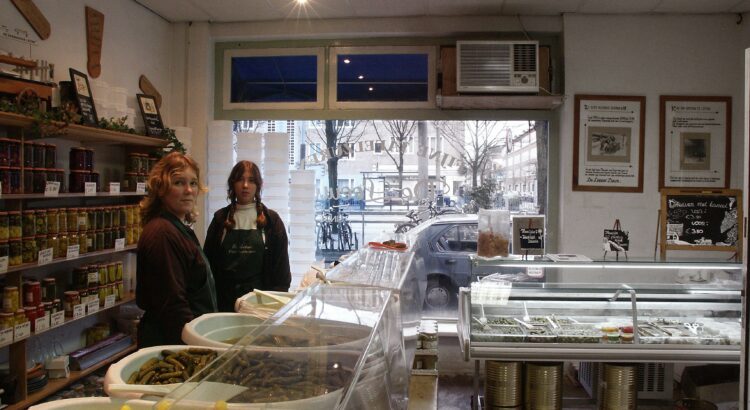Walking through the south of Amsterdam, one might stumble upon this hidden gem; a jar of pickles in a store window. Looking through the storefront, you realise there are pickles and pickled vegetables everywhere: in jars, in big open bins and you see them being sold over the counter. “Why are there so many pickles and why are they so special?”, you might ask. Well, when it comes to famous Dutch foods, cheese and stroopwafels often take the spotlight. But, there is one eating habit that is less-known and undervalued in the Dutch cuisine; the tradition of table sour. The tasteful condiment of table sour is a supplement to all kinds of food in the Dutch cuisine. For instance the herring, which any person of Amsterdam would not eat without a bit of diced onions and sliced pickles, or as Amsterdam people call it: “uitjes en zuur”. This store is one of Amsterdam’s last authentic “sour stores” and dates back to 1860. The store is founded and managed eversince by the Jewish family De Leeuw. The store is a cherished address for local residents, restaurant operators and enthusiasts from far beyond the city. This blog is devoted to this fascinating family store and the history of traditional table sour behind it.
The Souring Process
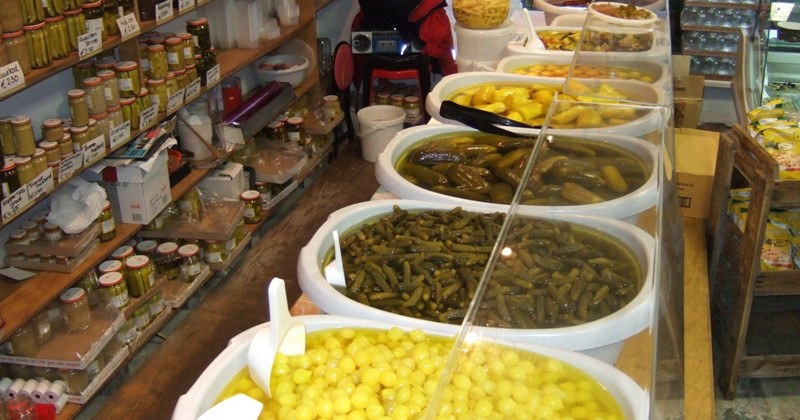
To find out more about this small “pickle factory” I biked to the store in the south of Amsterdam. The location of the store is not a coincidence. The tradition of table sour was brought to Amsterdam by Jewish immigrants in the seventeenth century. Pickling vegetables and other ingredients was a tradition that had emerged to preserve harvests, a necessity during tough times in long winters. As the stream of Jewish migrants came to the city of Amsterdam during the nineteenth century, so did the conservation tradition of sour ware. That is why the store is located in one of the historical Jewish areas of Amsterdam. As you step into “De Leeuw”, the first thing you will notice is the intense aromas of the countless pickled delicacies. The shop not only sells the pickles, but also incorporates the so-called “inlay”. This is the process of any kind of vegetables literally being “pickled” in brine water. That process is displayed underneath the counter; large open bins filled with inlayed pickles, cucumbers, cauliflower and lemons, accompanied by jars of onions and horseradish in vinegar. Once the vegetables are pickled, they become part of the assortment of classic table sour.
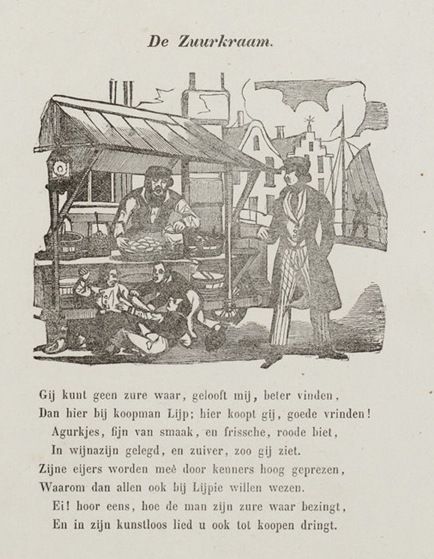
Preserving the Sour Tradition
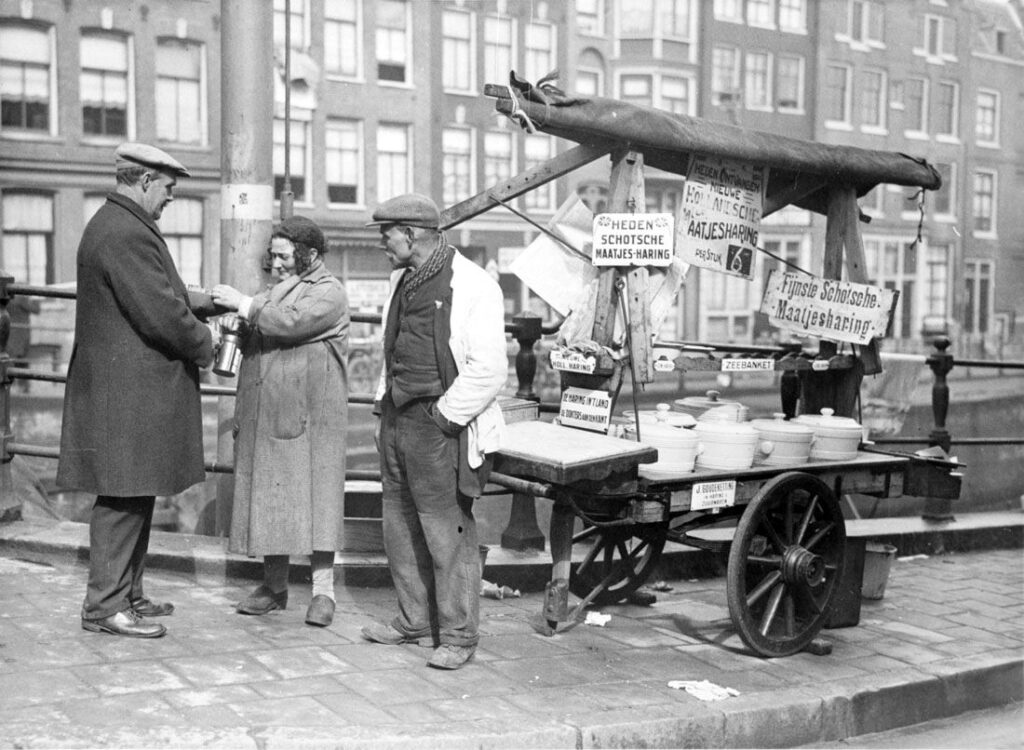
Just like the milkman had his milk cart, the merchants of sour ware had their sour cart. Traditionally, “De Leeuw” Sour Wares rolled their cart through the street of Amsterdam. But with the emergence of busy traffic, the family decided to open a store and stop touring the streets by cart. Nowadays, the fourth generation of sour ware merchants Fred “De Leeuw” Ooms and his wife Monique Holzhaus run the company. They are passionate about their family business and proud that their store still exists, The couple tells me the story of their great grandfather Isaac de Leeuw who found a successful pickling formula. Since then they have tried to change as little as possible, such as their opening hours. In fact, they are only open on Thursdays, Fridays and Sundays, so says Monique:
“In the old days, there were no refrigerators, people found in conserving another way preserve food. Isaac developed his own special taste in conserving and walked past the houses with his cart. We place great value on tradition. Isaac still went by the houses with his cart on the other days, that is why the opening hours have never changed.”
Same goes for their traditional customs; sauerkraut is still served straight from the jar and the use of weighing scales is still a taboo.
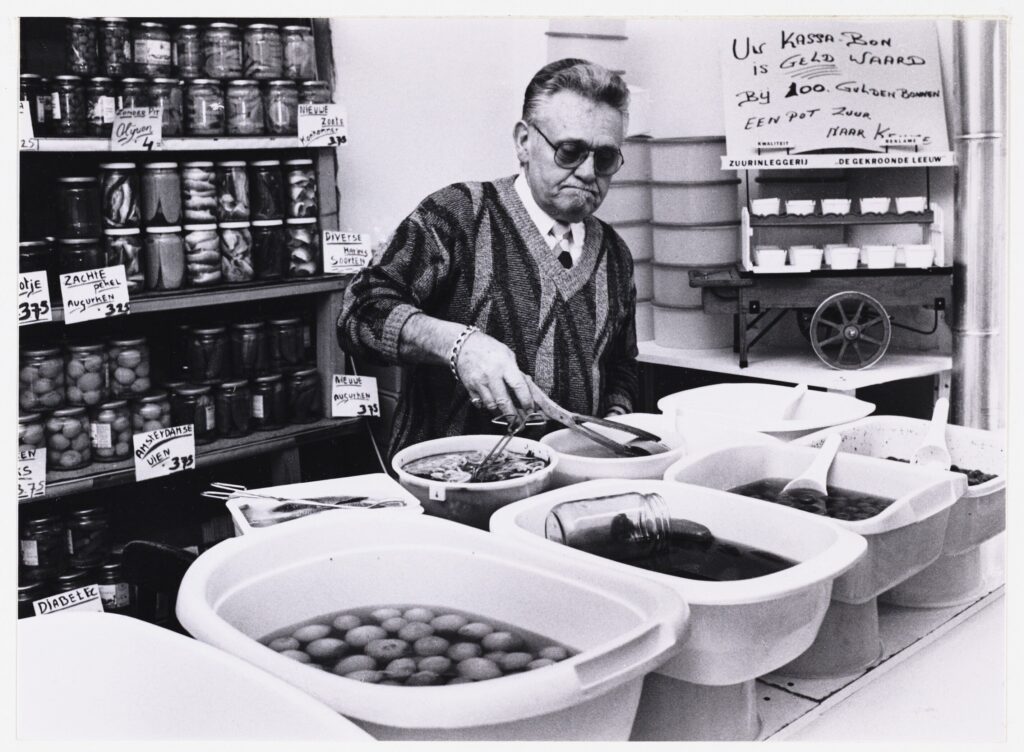
Sour Store, Sweet Service
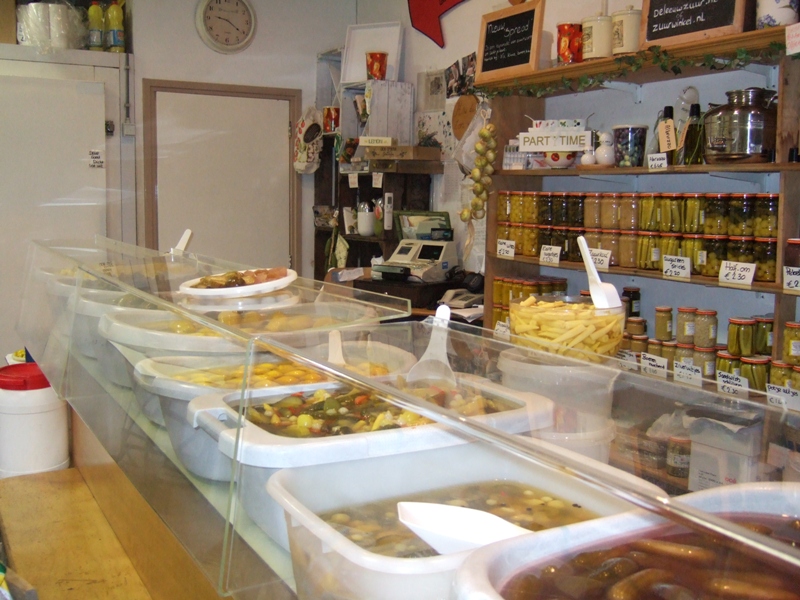
Sour store “De Leeuw”
The store is classically set up for a sour store, as I am told. The large bins in the counter, a wall with jars and old verses on the wall such as: “Blijf gezond, zeker weten; dan moet je onze zuurwaren eten”, translating into: “Eat healthy, just to be sure; you have to eat our sour wares”. Everything is, as Monique tells, in the same kind of brine water, or as Monique calls it “in hetzelfde nat”. She explains the difference between “fresh from the barrel” and “on jar”: “Once you eat from the barrel, you will never eat from a factory jar again”. She does have a point. In addition to selling pickles, the store also has assorted fish and meat. As befits an Amsterdam born and raised I ordered the classic Herring with “uitjes en zuur”, which I can definitely recommend. These pickles are refined sour with a soft sweetener which makes it non-biting. The crunchiness of the pickle with the spicy sweetness of the wine vinegar come to the senses and complement the tender fish. Eating the herring with the authentic pickles here is something everybody should do to fully understand the undervalued tradition table sour. In this store, it is as if time stood still here. For a second, the history is tangible and tastable in this delicious eatable form.
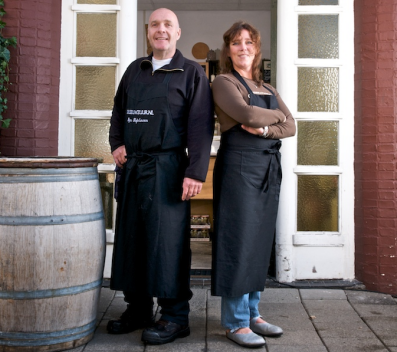
Sources used:
Collectie Centsprenten, Koninklijke Bibliotheek
Collectie Joods Historisch Museum
Collectie Stadsarchief Amsterdam
Featured picture: Collectie Standsarchief Amsterdam
To find out more about the history of table sour in Amsterdam, this book has lots of images and archival research that can give great insight: Ravestein, Paul van, and Monique Mulder, De zure stad : een biografie van tafelzuur in Amsterdam (Amsterdam: Nijgh & van Ditmar, 2022)
